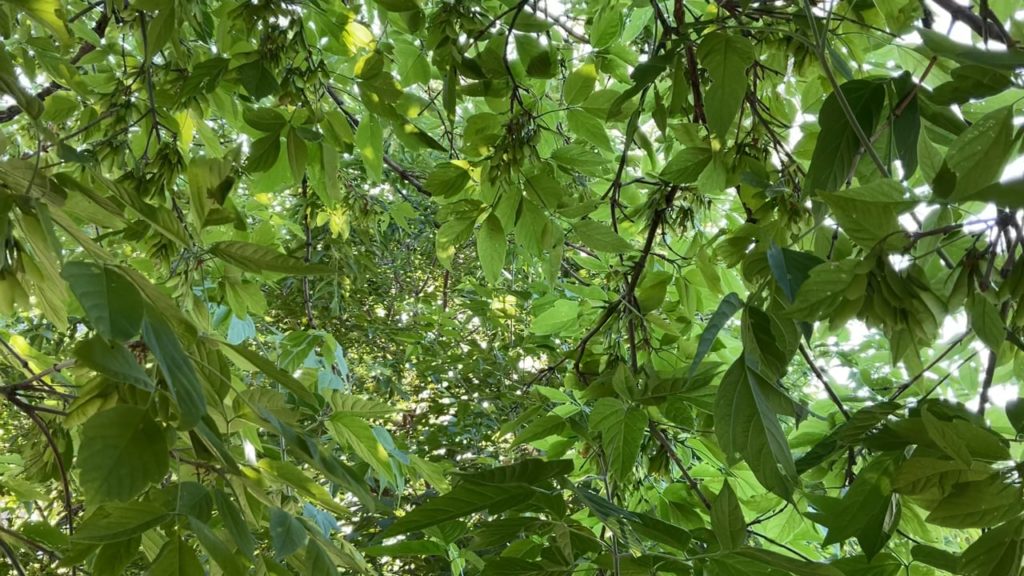Manitoba maple, also known as Boxelder, is a native tree species to Manitoba. It is a small to medium sized deciduous tree, approximately 12m tall with a spreading crown of thick limbs. Manitoba maple’s unique leaf pattern can be easy to distinguish: the leaves are opposite, compound, and composed of 3-5 coarse-toothed or lobed, paired leaflets (it looks similar to some ash species). Compound leaves are those whose leaflets are attached to the middle vein but with stalks. As a fast-growing, hardy species, Manitoba maple is a great ornamental and shelter-belt tree. Commonly found in areas with moist soils, it has adapted to overwinter in the prairies, and sprouts readily from roots and stumps. Female trees tend to grow taller and with a single stem while male trees tend to be shorter with multi-stems. Manitoba maple’s seeds are winged and often hang on in clusters on the twigs throughout the winter. The seeds are an important food source for birds and mammals. (Tabitha Martens for Winnipeg Trails, 2021).
Manitoba maple is also an important tree species for Indigenous communities in Manitoba. In Cree, its name translates to ‘sugar tree’. The sap from Manitoba maple can be tapped in April and made into syrup and sugar. Historically, it was significant as a source of carbohydrates post-winter, a time when food stocks were often low. It is less sweet than the sap of its relative, the sugar maple, but tastes just as good! (Tabitha Martens for Winnipeg Trails, 2021).
